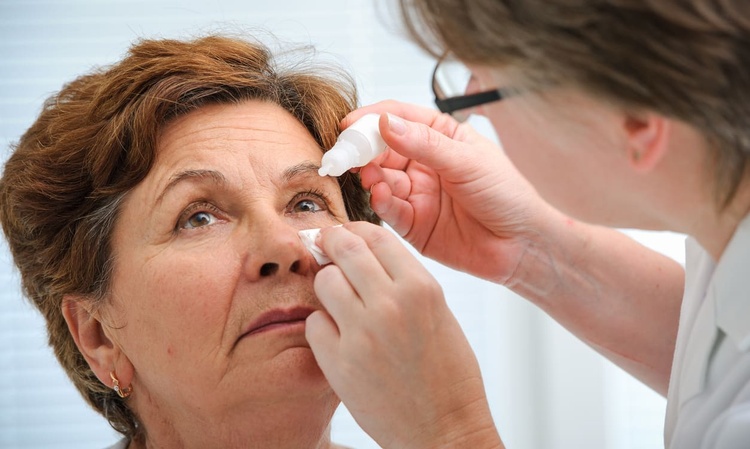Understanding Macular Degeneration: Vision Health Guide
Macular degeneration affects millions of Americans, gradually impacting central vision and daily activities. This progressive eye condition primarily targets the macula, the central part of the retina responsible for sharp, detailed vision. While age-related macular degeneration is the most common form, understanding the condition's development, symptoms, and management options can help preserve vision quality and maintain independence throughout life.

Age-related macular degeneration stands as one of the leading causes of vision loss among adults over 50 in the United States. The condition develops when the macula, a small area at the center of the retina, deteriorates over time. This deterioration affects the ability to see fine details, read text, recognize faces, and perform tasks requiring central vision clarity.
The retina contains millions of light-sensitive cells that convert images into electrical signals sent to the brain. When macular degeneration occurs, these cells in the central retina begin to break down, creating blind spots or distorted vision in the center of the visual field. Peripheral vision typically remains intact, allowing individuals to navigate their environment while experiencing challenges with detailed visual tasks.
Learn About Therapies That Support Long-Term Eye Wellness
Several therapeutic approaches help manage macular degeneration and support overall eye health. Anti-VEGF injections represent a primary treatment for wet macular degeneration, targeting abnormal blood vessel growth beneath the retina. These medications, including ranibizumab, aflibercept, and bevacizumab, require regular administration by retinal specialists.
Photodynamic therapy combines light-activated medication with laser treatment to seal leaking blood vessels. This approach proves particularly effective for specific types of wet macular degeneration. Additionally, nutritional supplements containing vitamins C and E, zinc, copper, and lutein may slow progression in intermediate dry macular degeneration cases.
Low vision rehabilitation services provide training and adaptive equipment to help individuals maximize remaining vision. These programs include instruction on magnification devices, lighting modifications, and techniques for daily living activities.
Explore Key Facts and Prevention Methods
Macular degeneration exists in two primary forms: dry and wet. Dry macular degeneration accounts for approximately 85-90% of cases and progresses slowly as drusen deposits accumulate beneath the retina. Wet macular degeneration, though less common, advances more rapidly due to abnormal blood vessel growth that can leak fluid and blood.
Several risk factors increase the likelihood of developing this condition. Age remains the most significant factor, with risk increasing substantially after age 60. Genetics play a crucial role, as family history of macular degeneration elevates individual risk. Smoking doubles the risk of developing the condition, while cardiovascular disease and high blood pressure also contribute to increased susceptibility.
Prevention strategies focus on modifiable lifestyle factors. Maintaining a diet rich in leafy green vegetables, fish high in omega-3 fatty acids, and colorful fruits provides essential nutrients for retinal health. Regular exercise improves circulation and may reduce inflammation that contributes to macular degeneration. Protecting eyes from ultraviolet light through quality sunglasses helps prevent cumulative damage over time.
Discover How Regular Eye Care Can Preserve Vision Health
Routine comprehensive eye examinations enable early detection and monitoring of macular degeneration. Eye care professionals use various diagnostic tools to assess retinal health and track disease progression. Optical coherence tomography creates detailed cross-sectional images of the retina, revealing fluid accumulation or structural changes. Fluorescein angiography helps identify abnormal blood vessel growth in wet macular degeneration cases.
The Amsler grid serves as a simple home monitoring tool for individuals with macular degeneration. This grid of straight lines can reveal distortions or blind spots that may indicate disease progression. Regular self-monitoring between professional examinations helps detect changes that require immediate attention.
Early intervention significantly impacts long-term outcomes. When detected in early stages, various treatments can slow progression and preserve functional vision. Delayed diagnosis often results in irreversible vision loss and reduced treatment effectiveness.
| Treatment Type | Provider Options | Cost Estimation |
|---|---|---|
| Anti-VEGF Injections | Retinal specialists, ophthalmology clinics | $1,850-$2,000 per injection |
| Comprehensive Eye Exam | Optometrists, ophthalmologists | $200-$400 per visit |
| OCT Imaging | Eye care centers, retinal practices | $250-$500 per scan |
| Low Vision Services | Rehabilitation centers, vision therapy clinics | $150-$300 per session |
| Nutritional Supplements | Pharmacies, online retailers | $25-$50 per month |
Prices, rates, or cost estimates mentioned in this article are based on the latest available information but may change over time. Independent research is advised before making financial decisions.
Living with macular degeneration requires adaptation and ongoing management. Support groups and educational resources help individuals and families navigate the challenges associated with vision changes. Many communities offer local services specifically designed for people with visual impairments, including transportation assistance and adaptive technology training.
Technology continues advancing treatment options for macular degeneration. Researchers investigate stem cell therapies, gene treatments, and artificial retinal implants as potential future interventions. Clinical trials provide access to experimental treatments for eligible participants while contributing to medical knowledge advancement.
Understanding macular degeneration empowers individuals to make informed decisions about their eye health. Regular monitoring, appropriate treatment when necessary, and lifestyle modifications can help preserve vision and maintain quality of life despite this challenging condition.
This article is for informational purposes only and should not be considered medical advice. Please consult a qualified healthcare professional for personalized guidance and treatment.




